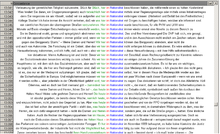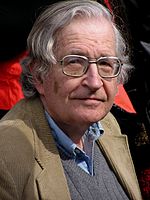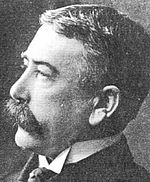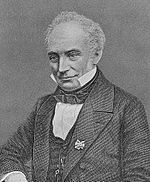Linguistics
Linguistics (from the Latin lingua 'tongue', 'language') studies human language in various approaches. The content of linguistic research is the language as a system, its individual components and units and their meanings. Furthermore, linguistics deals with the origin and historical development of language, with its versatile use in written and oral communication, with the perception, learning and articulation of language as well as with the possible associated disorders.
As a large branch of linguistics, general linguistics examines aspects that several languages have in common. It provides the methods with which any individual languages can be described and also compared with each other. Essential aspects of general linguistics are grammar theory, comparative linguistics or language typology and historical linguistics. Linguistic system, language history and language use can also be studied limited to certain individual languages or language groups, such as German in German Linguistics or the Romance languages in Romance Studies.
Another subfield of linguistics is applied linguistics. This can also deal with questions that are formulated across languages, for example scientific principles of language teaching in the field of foreign language teaching and learning research or speech therapy in clinical linguistics. Psycholinguistics examines, among other things, the language acquisition of young children and the cognitive processes that take place when people process language. Corpus Linguistics and Quantitative Linguistics are fields that have become much more important in the last few decades due to the expansion of technical possibilities. Sociolinguistics, media linguistics and political linguistics deal with public language use and the transitional area to sociology.
Linguistics thus comprises numerous larger and smaller subfields, which are altogether disparate in terms of both content and methodology and are in contact with a large number of other sciences.
Science Type
Since different readings of the term language exist and very different aspects of language are studied, the assignment of linguistics to only one type of science is not possible. For example, linguistics, as the study of the linguistic system, is regarded by many as a subfield of semiotics, the study of signs, and can thus be assigned to the group of structural sciences and the formal sciences. If, however, the individual acquisition of language and the use of language are viewed from a psychological or clinical point of view, these sub-fields of linguistics are to be counted among the natural sciences. If, on the other hand, language is viewed as a social and cultural phenomenon, linguistics is to be regarded as a cultural science or a science of the humanities. There are also sub-areas of linguistics (e.g. ethno-, polito- or sociolinguistics) which are to be counted as such among the social sciences.
Subdivisions
In addition to the inhomogeneous naming of the scientific discipline itself, the separation of linguistics into clearly delineated sub-disciplines is also inconsistent. Often even such a separation itself is controversial, which is not least due to the overall strong interdisciplinary character of the scientific field as a whole. Many researchers already find the demarcation of the three major linguistic domains
- Comparative linguistics or historical linguistics
- General linguistics and
- Applied Linguistics
as artificial or inappropriate. This is also reflected in the sometimes differing classification of individual fields of research as belonging either to one or the other area. For example, there is no general agreement as to whether variety linguistics should be regarded as a delimited subfield of applied linguistics or as part of sociolinguistics.
However, philology, which studies individual languages from the perspective of linguistics as well as literature and cultural studies, is not usually regarded as a sub-field of linguistics. Rather, it is regarded as a separate discipline in the history of science, which is often reflected in Germany in a correspondingly separate university structure, even if close links exist between philologies and linguistics. In Austria, on the other hand, the relevant university institutes (primarily German, English, Romance and Slavic studies) generally have both a philological-literary and a linguistic department.
There is a broad consensus regarding the following taxonomy of linguistic sub-disciplines.
comparative linguistics
→ Main article: Comparative linguistics
Comparative linguistics can be divided into individual subfields according to whether a diachronic or synchronic mode of investigation is present. However, the general comparative subjects can also be assigned to general linguistics and the historical comparative subjects to an independent historical linguistics.
- General-comparative linguistics
- Areal typology, the synchronous-comparative study of languages in a geographical area with the aim of identifying linguistic associations.
- Contrastive linguistics, the synchronic-comparative study of usually only two languages with the aim of identifying the specific differences between them.
- Language typology, the synchronic-comparative study of languages with the aim of identifying language types.
- Universals research attempts to uncover the properties common to all languages (language universals)
- Variety linguistics, the synchronic-comparative study of individual languages with the aim of identifying differences within that particular language, i.e. linguistic varieties, e.g. different dialects, sociolects, technical languages, etc. (Since these differences are largely due to social factors, variety linguistics is also treated as a subfield of sociolinguistics, a discipline of applied linguistics. (Since these differences are largely due to social factors, variety linguistics is also treated as a subfield of sociolinguistics, a discipline of applied linguistics).
- Historical-comparative linguistics (also diachrony)
· Historical linguistics (in the narrower sense), the diachronic-comparative study of languages with the aim of identifying language families and tracing lines of development of one or more individual languages in comparison, i.e. changes in phonology, morphology, syntax, semantics and stylistics over time. It is therefore concerned with language change in all respects.
There is also a widespread tradition of combining this subject with the sub-fields listed below to form a single main subject of historical linguistics or historical linguistics. Under this assumption, then, the understanding of historical linguistics in the broader sense is present.
· Etymology, the study of the origin of words and their meanings.
· Indo-European studies attempts to reconstruct the Indo-European (Indo-European) original language as well as to trace the course to the present-day Indo-European individual languages by comparing the developments.
· Onomastics studies the origin, meaning, and distribution of proper names (often treated in conjunction with etymology).
Thus, a classification is made at the same time, which, in addition to general linguistics and applied linguistics, counts historical linguistics as a third major subfield instead of comparative linguistics, whereby the general comparative subjects are then counted as part of general linguistics.
General Philology
→ Main article: General linguistics
General linguistics, sometimes also called theoretical linguistics, is devoted to the study of language as an abstract system, but also to the establishment of general theories about language, the latter also being attempted by more recent sub-disciplines of applied linguistics, such as sociolinguistics or discourse analysis.
Traditional core areas of general linguistics are as follows:
- graphemics, the study of writing as a language system
- Lexicology, the study of the structures in the vocabulary of a language and its mental representation.
- Morphology, the study of "word components" and changeable word forms (inflectional forms, word formation)
- Phonetics, the study of speech sounds (phonetic inventory of languages, articulation, sound perception)
- Phonology, the study of the speech sound systems of the individual languages (sound combinations, syllable theory), including intonation (prosody).
- pragmatics, the study of the (situation-dependent) meaning of utterances and of actions by means of language (speech acts, conversation)
- Semantics, the study of the meaning and significance of linguistic units (word meaning, sentence meaning)
- syntax, the study of the form and structure of sentences
More recently, the following research areas can also be seen as independent subfields:
- Conversational linguistics, (also linguistic conversation analysis, dialogue research), study of authentic oral communication
- grammar theory, study of the structure of grammar using formal models
- Quantitative linguistics, the development of language laws on the basis of statistical surveys with the aim of designing a theory of language on this basis.
- text linguistics, the study of the structure, function and effect of texts and their components
The following sub-areas are mainly on the borderline between others or include several such areas:
- Morphonology, studies word formation on the phonological level
- Morphosyntax deals with the influence of morphological processes on syntactic variables
- Philosophy of language, the study of general functions of language and language elements and of the relationship between language, thought, imagination and reality
Applied Linguistics
→ Main article: Applied linguistics
Applied linguistics is by no means to be understood as a homogeneous sub-area of linguistics; rather, it subsumes the sub-disciplines that are primarily not concerned with language as an abstract system, but rather see language in the context of its "real" environment, i.e. are dedicated to the language that is actually used. This understanding of "applied", i.e. applied linguistics, is contrasted with the idea of linguistics applied, which is to be understood as the practical implementation of linguistic research results, as is the case, for example, in computational linguistics (where findings from general linguistics are applied in computer science), clinical linguistics (where research is used to develop forms of therapy), language teaching research (for the development of teaching materials) or writing research and writing didactics (for pedagogical purposes).
Furthermore, psycholinguistics, sociolinguistics and other subjects are often classified as general linguistics because they are devoted to describing language as part of the individual and explore general principles and processes - in contrast to those disciplines that relate to practical life and are thus concerned with the "application" of language.
Since sociolinguistics studies both language and society, as well as the multilingualism of society itself, it can also be used as an umbrella term for those sub-disciplines that are normally considered equally established areas of applied linguistics, e.g. language teaching research or discourse analysis.
Above all, however, the structures of universities and institutes determine how the disciplines are perceived, because the majority of applied subjects also deal with those aspects which, according to definition, are counted as part of general linguistics.
The following subfields are usually assigned to applied linguistics:
- Computational linguistics under the aspects
- Artificial intelligence
- Speech recognition and prosody recognition by computer
- Software development (language correction programs, learning software and web-based learning platforms)
- Text technology and design of hypertext
- Forensic linguistics, investigation and diagnostics of language for criminal and forensic purposes
- Internet linguistics, analysis of linguistic phenomena that arise on and through the Internet
- Clinical linguistics, the study of language use and speech perception in the case of brain damage and the development of therapeutic procedures, including language development diagnostics; closely related to this are a number of other subjects that are classified either as applied linguistics or as general linguistics. In addition to psycholinguistics in particular, these also include
- Neurolinguistics, the study of how language is processed in the brain.
- Patholinguistics (also speech pathology), the study of problems in speech perception, processing and production.
- lexicography, compilation of dictionaries (primarily for general use)
- Language and writing consulting, consulting and coaching for institutions, public bodies, journalism and public relations, as well as for private purposes and sectors
- Language teaching and learning research and language didactics, investigation of, and design measures for language teaching, speech education, literacy; including other subfields such as didactics of writing and investigation of learning behaviour.
- language planning, study and creation of policy frameworks and language policies for language standardisation or multilingualism
- Standardology deals with the standardisation of languages or sub-languages (such as the merging of several language varieties into one (national) standard language within the framework of language policy or the standardisation of technical and other terminology, etc.).
The following subfields are applied subjects in the sense of applied linguistics and can also be counted as general linguistics in a broader sense:
- Computational linguistics under the sub-aspects of
- Programming languages
- Human-Computer Interaction
- Ethnolinguistics, study of language and language culture under ethnological aspects
- Psycholinguistics, the study of language as a function of mental functions, in particular
- research on language acquisition (first and second language acquisition)
- Cognitive linguistics, the study of the relationship between language and thought.
- Sociolinguistics deals "in a narrower sense" with language as a function of social variables such as social class or age. "In a broader sense", the relationship between language and society is dealt with under various aspects, as well as the multilingualism of society. This includes in particular the following subfields:
- Feminist linguistics, study of language and language use as a function of gender, gender-neutral language use (If gender is defined not as natural sex (sexus) but as social sex (gender), the research is not conducted from a feminist perspective alone and the subfield is treated as gender linguistics).
- Research on special languages (e.g. youth language, studies of youth language and youth language behaviour and their historical development)
- linguistic discourse analysis examines speech utterances on a supra-textual level
- Language attitude research, investigation of attitudes (opinions, attitudes) towards individual languages and/or dialects
- Intercultural communication, study of linguistic and extra-linguistic behaviour in communication between speakers of different cultures
- interlinguistics, the study of international communication primarily using planned languages
- Media linguistics, research primarily on the study of linguistic phenomena in media texts, multilingualism in the media and the recording of media discourse
- Political linguistics, research on language and language behaviour in the political sector
Interdisciplinary subfields of linguistics
In addition to the subjects already listed, whose classification is definition-dependent, there are a number of other subject areas whose designations evoke different understandings depending on the university, sub-discipline or paradigmatic orientation and which can only be assigned to a specific linguistic sub-area to a limited extent. They also touch in part on other fields of science. These are:
- Dialectology
- descriptive studies of dialects in general as well as in comparative linguistics
- use of dialects, i.e. from a sociolinguistic perspective
- the relationship between language and dialect, i.e. in variety linguistics
- Research on technical languages
- as a systematic description of technical and occupation-specific languages, part of general linguistics (variety linguistics)
- as a description of the use of technical languages in communication in state institutions and other facilities (official language, medical faculty, etc.) Subfield of applied linguistics (sociolinguistics)
- Contact linguistics, investigation of language contact phenomena as an interface between general, applied and comparative linguistics
- colonial linguistics, study of the manifold linguistic aspects that arise/have arisen in colonial situations
- Corpus linguistics, the study of the language system of real written texts and oral speech on the basis of representative text corpora, either seen as a new independent subfield of general linguistics or used as a method of gaining knowledge in individual general and applied subdisciplines.
- Paleolinguistics studies the origin of human language. It is difficult to assign to one of the main areas of linguistics and there are overlaps with psychology and anthropology.
- Ecolinguistics, moderately established branch of sociolinguistics, essentially devoted to the ecology of language and the language of ecology.
- Writing research and writing didactics, at the interface between text linguistics, sociolinguistic institutional research and language teaching research.
- Writing linguistics is a term that summarizes the various streams of linguistics that are dedicated to the study of writing and writing systems as well as their acquisition and targeted use for specific communicative purposes.
- Language statistics
- as statistics of languages part of socio-, variety- or interlinguistics
- as the collection of statistical data on any linguistic aspect, mostly in the field of general linguistics, but also in historical linguistics, psycholinguistics, language acquisition research, language typology and other disciplines
- Speech perception, research on the acoustic perception of speech (auditory phonetics) at the intersection of phonetics, psycho- and neurolinguistics
- Translatology

Electronically produced concordance - means of modern corpus linguistics

Noam Chomsky (* 1928), founder of Generative Grammar and revolutionary of Theoretical Linguistics

Ferdinand de Saussure (1857-1913), one of the most important representatives of linguistic structuralism.

Franz Bopp (1791-1865), founder of historical-comparative linguistics
Questions and Answers
Q: What is linguistics?
A: Linguistics is the study of language.
Q: What are people who study language called?
A: People who study language are called linguists.
Q: What are the five main parts of linguistics?
A: The five main parts of linguistics are phonology, morphology, syntax, semantics, and pragmatics.
Q: What is phonology?
A: Phonology is the study of sounds.
Q: What is morphology?
A: Morphology is the study of parts of words, like "un-" and "-ing".
Q: What is pragmatics?
A: Pragmatics is the study of the unspoken meaning of speech that is separate from the literal meaning of what is said.
Q: What are some examples of applied linguistics?
A: Some examples of applied linguistics are forensic linguistics, used in crime investigations, and computational linguistics, used to help make computers understand languages, as in speech recognition.
Search within the encyclopedia